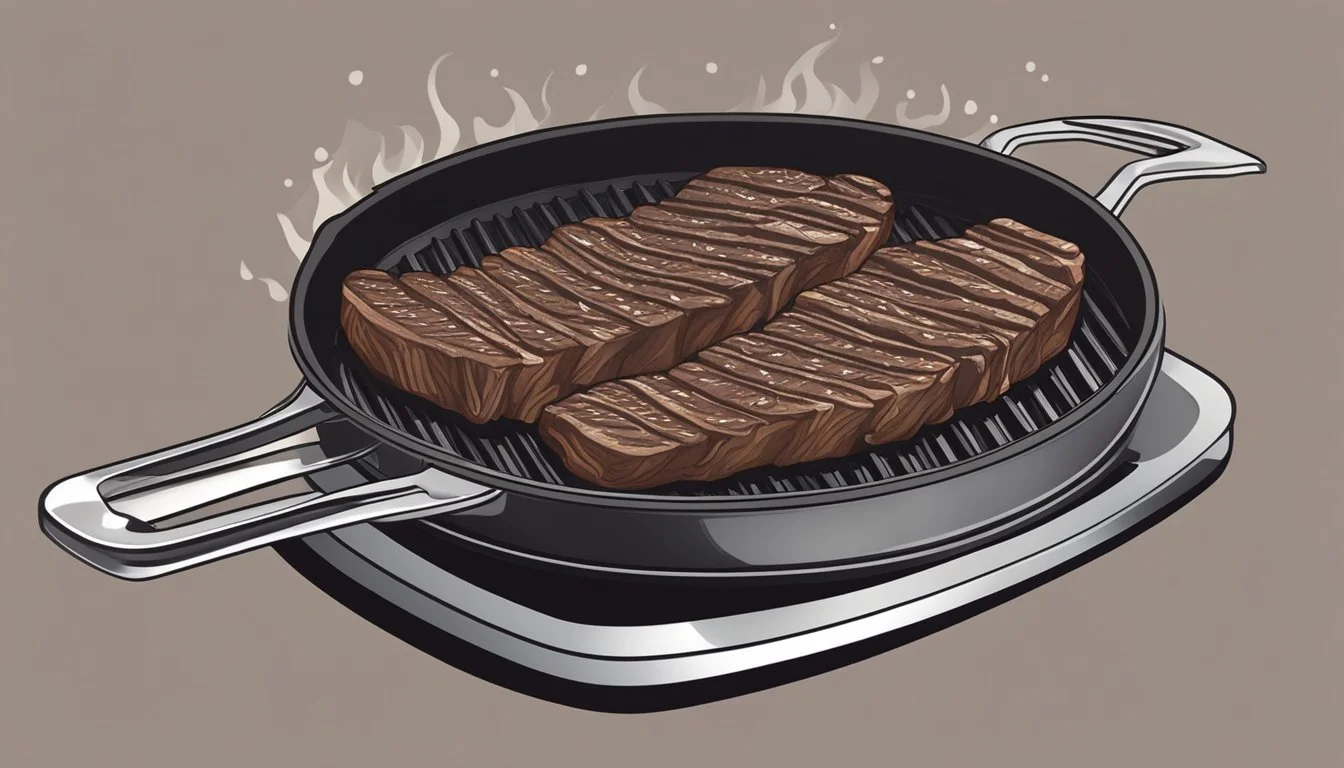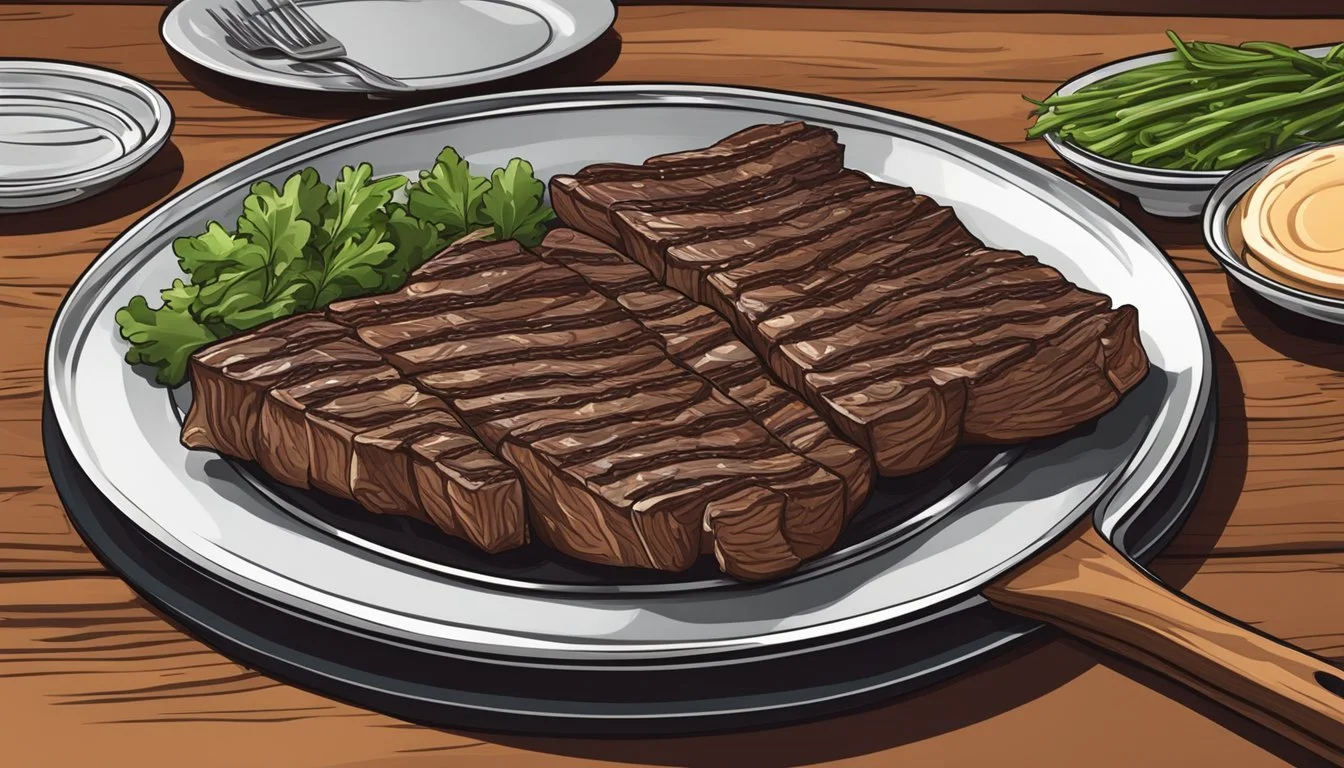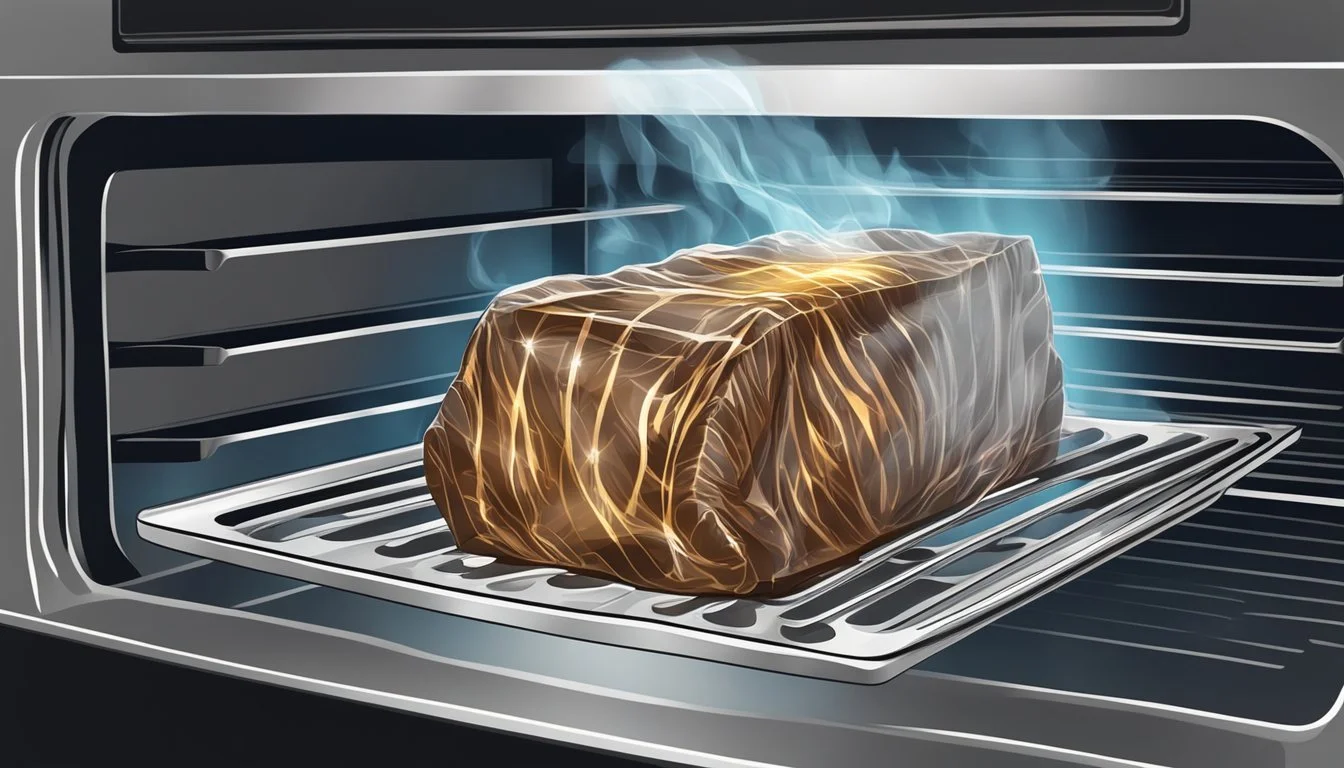Best Way to Reheat Skirt Steak
Keeping the Flavor Intact
Reheating skirt steak so that it retains its delicious, beefy flavor and tender texture is an art that many steak enthusiasts strive to master. Skirt steak, known for its rich flavor and quick cooking time, is often enjoyed fresh off the grill or pan, but leftovers can pose a challenge. The goal when reheating is to bring the steak back to the ideal temperature without overcooking it, which can cause it to become tough and lose its juiciness.
Several techniques are recommended for reheating skirt steak effectively. The most common methods include using the oven, a stovetop, or a sous vide machine. Each technique has its own set of benefits. For example, the oven method allows for an even distribution of heat, which helps in maintaining moisture and preventing the steak from drying out. On the other hand, stovetop reheating can be quicker and add a fresh sear to the steak, enhancing its flavor. The sous vide method is praised for its precision in temperature control, resulting in a reheated skirt steak that is as close to its original state as possible.
It's essential to recognize that not all reheating methods are created equal, and the best technique will depend on the tools available, the diner's personal preferences, and the desired outcome. A critical factor across all methods is to monitor the internal temperature of the meat to ensure it's warmed through to just the right level, enhancing its natural flavors and textures without overcooking.
What Makes Skirt Steak Unique
Skirt steak is renowned for its rich beefy flavor and distinctive texture. This cut necessitates careful reheating to maintain its desirable qualities.
Beefy Flavor and Texture
Skirt steak stands out due to its pronounced beef flavor, attributed to the cut being from the diaphragm muscles of the cow. It's characterized by a marbling of fat that contributes to its juiciness when cooked correctly. The texture of skirt steak is fibrous, which is why it’s often marinated or slow-cooked to achieve a tender bite.
Common Mistakes When Reheating
When reheating skirt steak, there are common pitfalls that can lead to a less than desirable outcome. Among these are:
Overcooking: Reheating for too long can cause the steak to become tough and lose its juicy quality.
High heat: Applying too much heat can dry out the meat and diminish its natural flavor.
Neglecting moisture: Failing to retain moisture can result in a dry and chewy texture rather than a tender and juicy steak.
Preparing Skirt Steak for Reheating
When one seeks to reheat skirt steak, ensuring the meat's proper preparation is critical for maintaining its quality. Skirt steak reheated properly can rival the flavor and tenderness of when it was originally cooked.
Refrigerator to Room Temperature
Before reheating, one should allow the skirt steak to come to room temperature. This process can take about 30 minutes depending on the thickness of the steak. Taking the steak out of the refrigerator and letting it rest ensures a more even reheating, as the steak won't be as cold at the center.
Steak Storage Tips
For optimal freshness and safety, skirt steak leftovers must be stored correctly:
Wrap skirt steak: Use plastic wrap or aluminum foil to cover the steak tightly, preventing air from drying out the meat. Alternatively, one can place it in an airtight container.
Refrigeration: Immediately store the skirt steak in the refrigerator to keep it safe from bacterial growth. Leftovers should be refrigerated within two hours of cooking.
Consumption timeline: For best quality, consume reheated skirt steak within three days of the original preparation.
Adhering to these storage tips will help maintain the steak's flavor and texture, preparing it well for a reheating process that aims to reproduce the meal's initial appeal.
Reheating Techniques
Reheating skirt steak correctly is crucial for maintaining its juiciness and flavor. The following methods will guide one through various techniques to achieve a deliciously reheated skirt steak.
Oven Method
To reheat skirt steak in the oven, preheating to 350°F (175°C) is the first step. One should:
Place the steak on a parchment-lined baking sheet.
Reheat for 10-15 minutes, checking until the desired internal temperature is reached.
Stovetop Method
Reheating on a stovetop requires a cast-iron skillet or frying pan with a little beef broth or oil to prevent drying out. Steps involve:
Preheating the skillet on medium heat.
Adding a few tablespoons of broth or oil.
Heating the steak evenly on both sides for a few minutes until warm.
Microwave Method
For a quick option, the microwave can be set on medium heat. Steps for this method include:
Cover the steak with a damp paper towel.
Heat in 30-second intervals, flipping in between, for about 90 seconds to 2 minutes total.
Sous Vide Method
The sous vide technique uses precise temperature control in a water bath. To reheat skirt steak, one should:
Vacuum-seal the steak.
Immerse it in a water bath at 130°F (54°C) for about 30 minutes.
Optionally, sear briefly in a hot pan for flavor.
Air Fryer Method
An air fryer can achieve a crispy exterior while reheating. For this method:
Preheat the air fryer to 350°F (175°C).
Place skirt steak in the air fryer basket.
Heat for 3-4 minutes, checking for desired temperature.
Ensuring Moisture Retention
Retaining moisture is critical when reheating skirt steak to preserve its beefy flavor and tenderness. Proper techniques can prevent the steak from becoming dry and overcooked.
Covering and Moisture Enhancers
To maintain moisture, skirt steak should be covered while reheating. Covering with a lid or foil helps to trap steam and preserve the internal juices. Parchment paper can also be used when reheating in an oven to aid in moisture retention.
Adding moisture enhancers is another effective method. Ingredients such as beef broth can be introduced to provide additional moisture during the reheating process. This can be done by:
Placing the skirt steak in a baking dish.
Pouring a small amount of beef broth into the dish, enough to cover the bottom.
Covering the dish with a lid or foil to lock in the moisture.
Monitoring Temperature with Meat Thermometer
Utilizing a meat thermometer is the best way to monitor the internal temperature, ensuring that the skirt steak does not overcook and lose its juices. The ideal internal temperature for reheated skirt steak is around 130°F to 135°F (54°C to 57°C) to achieve a juicy result.
Here is a brief guide on how to effectively use a meat thermometer:
Insert the meat thermometer into the thickest part of the steak.
Check the temperature halfway through reheating to gauge how quickly the steak is warming up.
Once the meat thermometer reads the desired temperature, remove the steak from the heat source immediately.
By following these steps and keeping an eye on the temperature, the steak can remain succulent and flavorful.
Achieving the Desired Steak Doneness
When reheating skirt steak, the chef must be attentive to not only restore its warmth but also to maintain or achieve the desired level of doneness. Avoiding overcooking is paramount to preserve the beef's intrinsic flavors and textures.
Understanding Doneness Levels
Doneness refers to the degree to which steak is cooked, characterized by its internal temperature and color. The below table outlines the internal temperatures correlating with different levels of doneness:
Doneness Temperature (Fahrenheit) Rare 120°F - 125°F Medium Rare 130°F - 135°F Medium 140°F - 145°F Medium Well 150°F - 155°F Well Done 160°F and above
Achieving medium-rare, a popular choice, involves heating the steak to an internal temperature ranging from 130°F to 135°F. This level is known for its warm, red center, offering a tender and flavorful experience.
Adjusting Heat Appropriately
To reach the desired doneness, the chef must adjust the reheating temperature and time accordingly. For example, a skirt steak that was initially served medium-rare and stored in the refrigerator will require gentle reheating to avoid surpassing the medium-rare stage.
A precise approach involves preheating the oven to a lower temperature, such as 250 degrees Fahrenheit, and using a wire rack over a baking sheet to allow heat circulation. The steak should be monitored with a meat thermometer to ensure it reaches, but does not exceed, the target temperature for the selected doneness.
Adding the Finishing Touches
After reheating the skirt steak, it's essential to focus on two final steps to enhance its flavor and texture: resting the meat to redistribute the juices and applying final seasonings for a savory burst.
Resting and Redistributing Juices
Resting the skirt steak is crucial for a juicy result. Post-reheating, transfer the steak to a plate and let it sit for about 5 minutes. During this time, the juices, which have been driven to the center by the heat, will redistribute throughout the meat, making every bite succulent. A foil tent can be used to keep the steak warm without causing steam buildup, which could compromise the crust.
Applying Final Seasonings
Once the steak has rested, a final touch of seasoning can amplify the beefy flavor. Consider a light sprinkle of coarse salt to enhance the natural taste. For those who enjoy a herbed finish, a drizzle of olive oil combined with chopped herbs such as cilantro or parsley adds a fresh dimension. If one prefers a richer flavor, a pat of butter in a hot cast-iron pan can be used to give the steak a quick sear, creating a perfect crispy exterior. This technique leverages the high smoke point of oils like grapeseed, making it ideal for achieving a desirable sear without burning.
Serving and Pairing
After reheating skirt steak to its juicy best, serving it with the right accompaniments and presenting it well can elevate the dining experience significantly.
Accompaniments for Skirt Steak
When it comes to side dishes, skirt steak pairs excellently with a variety of flavors and textures. To complement the beefy taste and tender texture, one should consider:
Vegetables: Roasted vegetables like asparagus, bell peppers, or zucchini offer a slight char that mirrors the steak's crispy edges. They also provide a nutritive balance to the meal.
Starches: A baked potato, loaded or simple, is a hearty choice that absorbs the steak's flavors, while leaving the spotlight on the meat. Alternatively, for those seeking a lighter option, a colorful and crisp salad brings freshness and contrast.
For tacos or fajitas: Slicing the steak thinly and serving it in soft tortillas alongside fresh salsa, avocado, and a squirt of lime juice can make for a tasty and casual meal.
Sauces and butters: Chimichurri or a dollop of compound butter can add a layer of richness without overpowering the steak's natural flavor.
Presentation Tips
The presentation of skirt steak should emphasize its succulence and should invite the diner to dig in. Here are a few pointers:
Cut against the grain: This not only ensures each bite is tender, but it also creates an appealing visual texture.
Rest the meat: Always let the steak rest for a few minutes after reheating. It allows the juices to redistribute, ensuring that they don’t run out upon cutting.
Platter garnishing: Use fresh herbs or a sprinkling of coarse salt to enhance the visual appeal of the platter.
By attentively selecting sides that harmonize with the skirt steak and presenting it thoughtfully, one can serve up a meal that is as pleasing to the eye as it is to the palate.
Safety and Sanitation
When reheating skirt steak, maintaining safety and sanitation is critical to prevent foodborne illnesses and ensure a delicious outcome. Attention must be focused on preventing cross-contamination and adhering to proper handling and cleanup procedures.
Avoiding Cross-Contamination
One must diligently avoid cross-contamination during the reheating process. Starting with separate utensils and cutting boards for raw and cooked meats is essential. Once the steak is cooked initially:
Utensils: Use a clean set of tongs or spatulas to handle the reheated steak.
Cutting Boards: Never place the cooked steak on a board that was used for raw meat without thoroughly sanitizing it first.
Storage: Store the steak in a sealed container before reheating, away from any raw meats in the refrigerator.
Proper Handling and Cleanup
Proper handling of the skirt steak is also crucial for safety:
Thawing: If the steak is frozen, thaw it in the refrigerator, avoiding countertop thawing, which can encourage bacterial growth.
Temperature: A meat thermometer should be used to ensure the steak reaches an internal temperature of 165°F (74°C) when reheating to kill any potential bacteria.
After reheating:
Cleanup: Clean all surfaces and tools used with hot, soapy water, followed by a sanitizer approved for food contact surfaces.
Leftovers: Any leftovers should be stored within two hours of reheating, and consumption should be within three to four days to prevent spoilage.
Advanced Reheating Techniques
When it comes to reheating skirt steak, using methods that seamlessly integrate heat control and moisture retention is key. Advanced techniques like searing in a cast-iron skillet and using sous vide can yield excellent results.
Using a Cast-Iron Skillet for Searing
A cast-iron skillet is praised for its heat retention and is ideal for searing a skirt steak to perfection. One begins by letting the steak attain room temperature, which ensures even cooking. The skillet itself must be heated over medium-high heat before the meat is introduced. A brief sear, typically one minute per side, imbues the steak with a delectable crust. It is crucial not to overcrowd the skillet, as this might result in uneven cooking.
Vacuum-Seal Reheat on Sous Vide
The sous vide method offers precise control over temperature, making it a superior technique for reheating skirt steak. The process involves vacuum-sealing the steak, then placing it in a water bath at a low temperature, usually around 130°F (54°C). This gentle reheating can take approximately 30 minutes but ensures that moisture is retained and the steak is evenly heated through. After the sous vide process, a quick sear in a hot skillet can provide a flavorful finish.
Storing Leftover Skirt Steak
Proper storage of leftover skirt steak is crucial to maintain its quality and safety for reheating. Employing the right methods in the refrigerator and freezer can significantly influence the taste and texture when the steak is reheated.
Best Practices for Refrigeration
When refrigerating leftover steak, it is essential to let the steak cool to room temperature before storage. They should ensure the steak is not left out for more than two hours to prevent bacterial growth. Once cool, they should:
Wrap the steak tightly in plastic wrap or aluminum foil, or place it in an airtight container. This limits exposure to air, which can cause spoilage.
Put the wrapped steak on a cooling rack to ensure proper air circulation, then place the rack in the refrigerator.
Consume refrigerated steak within three days for optimal freshness and to ensure safe reheating.
Freezing and Defrosting Tips
For long-term storage, freezing is a suitable option. Care should be taken to prepare the steak adequately for the freezer:
Wrap the steak in plastic wrap and a layer of aluminum foil or place it in a freezer bag to prevent freezer burn.
Label the package with the date to keep track of how long it has been stored.
Thaw frozen steak in the refrigerator overnight when ready to reheat. This helps maintain the steak's texture and flavor.
Avoid defrosting at room temperature or using a microwave, as this can degrade the quality of the meat and lead to uneven reheating.






